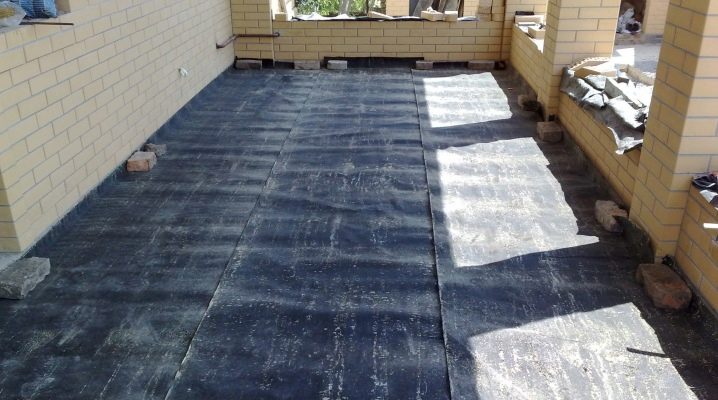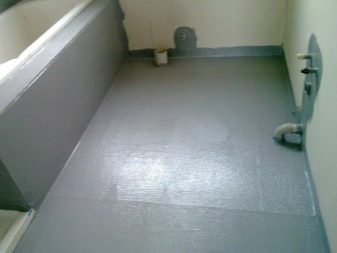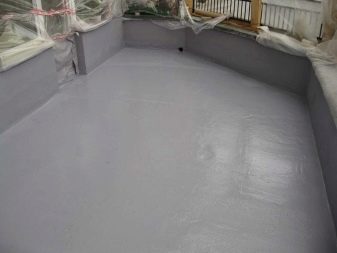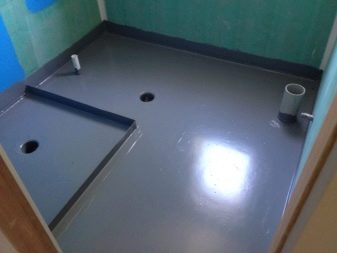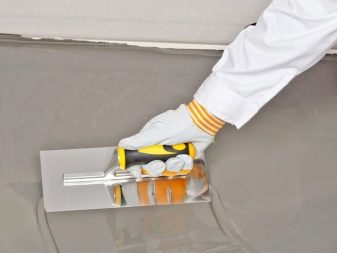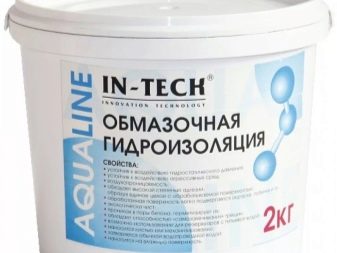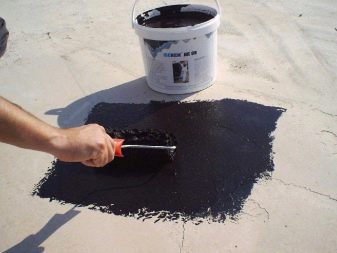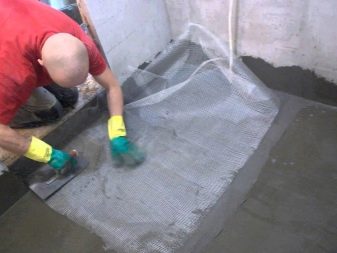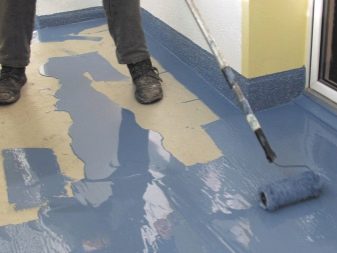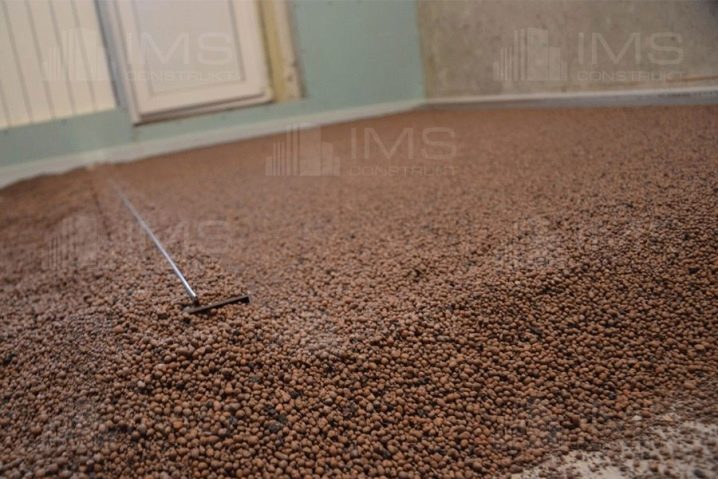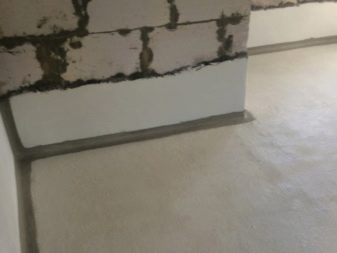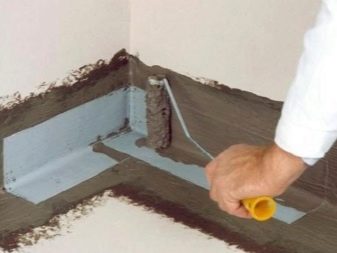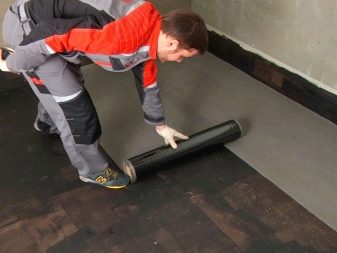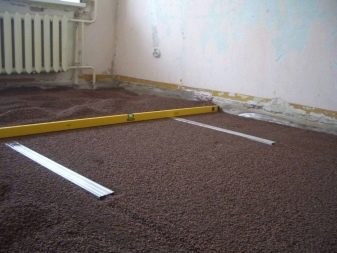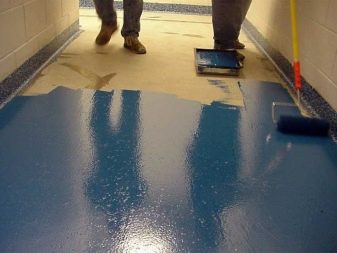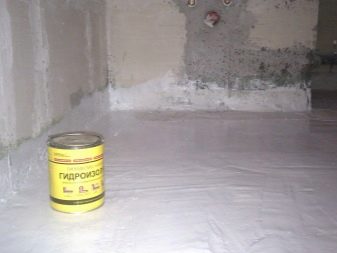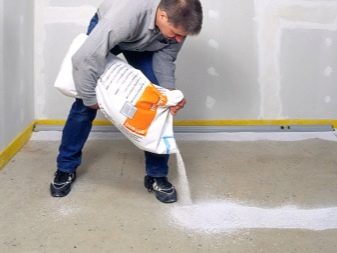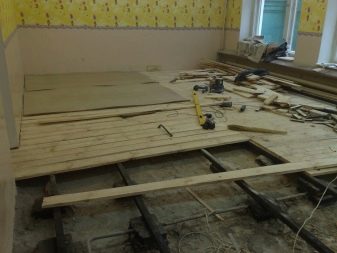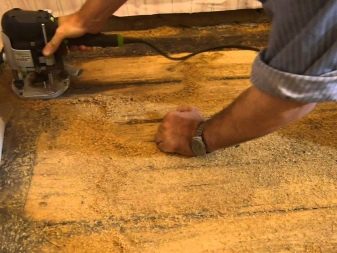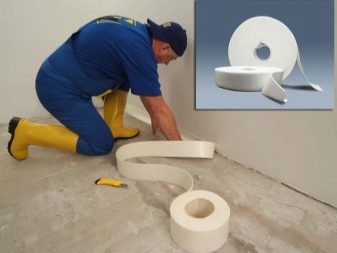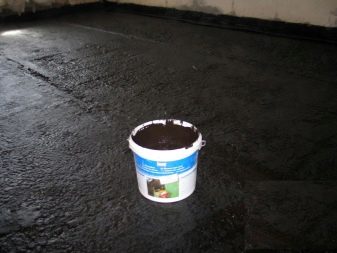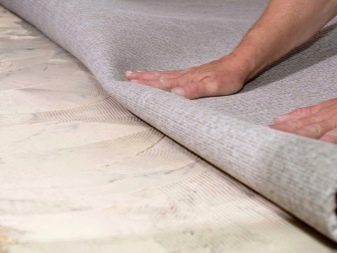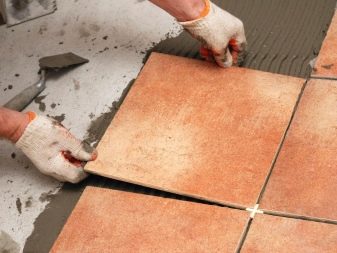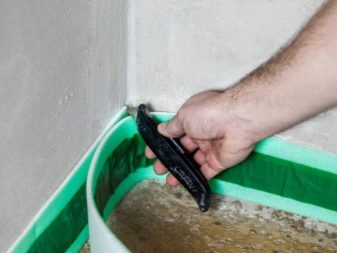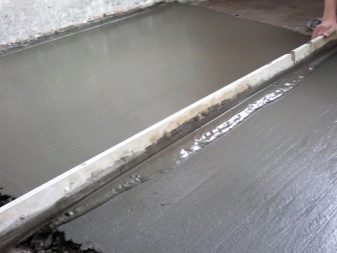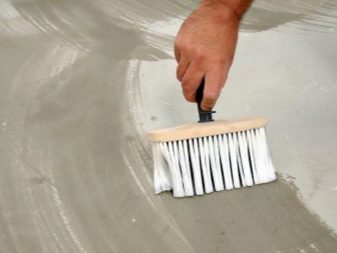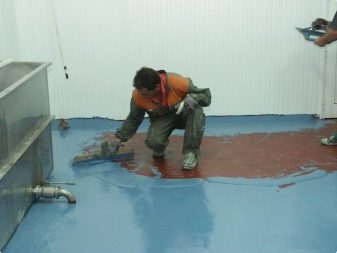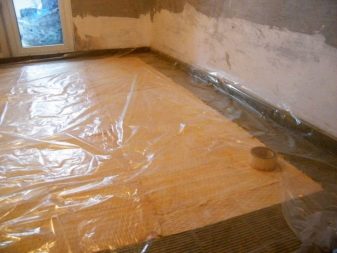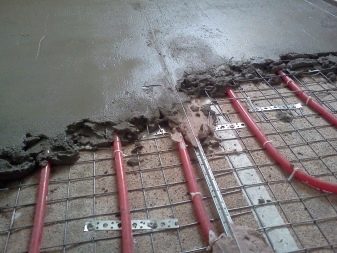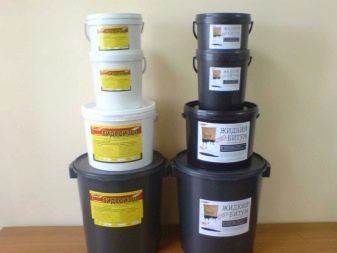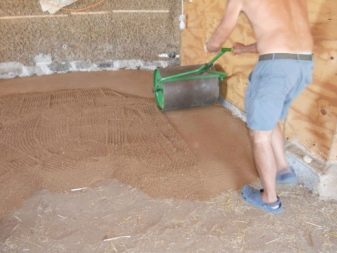Waterproofing the floor: types and methods of installation
Waterproofing is an important structural element of the device floor and is a durable coating that prevents the penetration of moisture into the ceiling and into the room.
Purpose
The formation of waterproofing due to the need to protect the base from moisture and condensation, as well as to prevent water flow to the lower floors. The presence of waterproofing material avoids the formation of mold and mildew in the interfloor ceilings, and also prevents corrosion of the metal base elements.
The important role of waterproofing in a private house is to protect the ground floor premises from the penetration of moisture from the basement during groundwater evaporation, as well as from the effects of condensation of an unheated basement as a result of infiltration.
The use of waterproofing materials in the formation of floors is recommended for all categories of buildings and structures located in humid climatic zones, as well as in kitchens and bathrooms of apartment buildings.
The use of waterproofing allows not only to prevent the flow of water to the lower floors in the event of an emergency, but also saves finishing materials from evaporation penetrating from below.
Special features
The construction of the floor of the bathroom, kitchen and bathroom in apartment buildings is regulated by the SNiP and assumes its location is 2-3 cm lower than in the adjacent premises. This design contributes to the localization of water in a confined space and its rapid collection in the event of an accident.
To limit the spill of water, you can use the steps or the threshold-curb. Installation of waterproofing is carried out at the stage of repair or construction of a building and is applicable to any type of foundation, including old wooden, cement and concrete floors, a screed floor and heating system. Laying waterproofing material can be carried out simultaneously with the arrangement of insulation and vapor barrier.
Kinds
Depending on the type of base, its strength and degree of wear, different technological methods are used to form a hermetic layer. According to the method of application, the form of release and performance characteristics, there are several types of waterproofing.
Obmazochnoy waterproofing is made using liquid glass and bitumen or polymer mastic. The essence of the method lies in the application and uniform distribution of the composition on a pre-moistened surface.
Excessive moisture, which is a prerequisite for the work, does not allow this method to be used in residential premises located on the second and higher floors due to the risk of liquid flowing down.
The most common composition for arranging a waterproofing coating is bitumen-rubber mastic. It is characterized by a high adhesion rate and provides strong adhesion to the subfloor. In addition to crumb rubber, latex or plasticizers are also added to bitumen solutions, the presence of which gives the composition additional elasticity. The use of these mixtures in conjunction with the reinforcing mesh and installed underthe screed significantly increases the overall strength of the concrete floor and minimizes the formation of cracks during shrinkage.
Pasting waterproofing is an effective way to protect against moisture penetration and is produced by gluing sheet or roll waterproofing material to the substrate. Previously, ruberoid was used most often as an isolate. Today, the modern building materials market offers a huge selection of all kinds of films and membranes.
The advantage of insulation is the quick and easy installation, availability and availability of efficient cutting-edge materials. Some roll models are made on a self-adhesive basis. The disadvantages include the low resistance of some films to the weight and mechanical loads, which significantly reduces the lifetime of the waterproofing waterproofing.
Combined waterproofing involves the simultaneous use of pasting and coating methods and is used in rooms with high humidity in cases where the use of one method is not enough. The need to use double protection arises when insulating a damp basement or basement, bathrooms and kitchens.
Cast waterproofing is a popular way of moisture protection.Filling is carried out using waterproof mastic and is made by covering the entire surface of the floor with a continuous layer. There are cold and hot mounting methods.
The advantage of this method is the possibility of forming an even and hermetic coating without first eliminating small defects and irregularities of the subfloor. The disadvantages include time-consuming and energy-intensive installation, as well as an increase in repair time due to the need to wait for the mixture to completely freeze.
Backfill waterproofing is installed in rooms that are exposed to strong mechanical stress. Formwork is pre-installed in the room, after which concrete is poured into the watertight containers. A feature of this material is its ability to turn into a gel at the slightest contact with water.
The gel-like substrate is evenly distributed on the surface and prevents the ingress of moisture inside. After the concrete has been poured in and carefully tamped down, the top layer should be plastered.The advantage of this method is the ability to isolate complex grounds, experiencing significant loads. The disadvantages include complex installation and high cost of materials.
Impregnating waterproofing is the easiest and most affordable way to protect floors from moisture and can be done independently. Lacquers with a polymer or bitumen base and building mixes with the addition of cement and sand are used as hydro-isolants. This method is successfully used for the treatment of concrete floors, limestone blocks and asbestos-cement sheets. The compositions penetrate deep into the base, after drying, form a moisture-proof layer.
The advantage of this method is easy installation, which can be carried out at any stage of construction or repair, and good resistance of the solutions to the effects of chemical compounds and extreme temperatures. The disadvantage is the need for thorough preparation of concrete bases by the method of degreasing, dusting and priming
Plastering waterproofing is characterized by the formation of a multilayer coating,consisting of cement and polymer compositions. The application of each subsequent layer is carried out only after the initial drying of the previous one. Usually, each layer is dried for 10 minutes.
The disadvantage of this type is the impossibility of its use in rooms subject to negative temperatures. Plaster begins to crack from the cold and requires additional application of frost-resistant compounds.
The need for thorough preparation of the substrate and periodic moistening during the drying period of the formed coating are also a disadvantage of the plastering method. The advantages include the availability and low cost of consumables.
Spray waterproofing is carried out using professional equipment and the involvement of specialists. Polymeric compositions with high adhesive properties and forming a waterproof film on the floor surface act as a waterproofing material.
The advantage of this method is high efficiency and quick installation, the disadvantages include the need to use personal protective equipment and the availability of skillsfinishing work.
Materials
Waterproofing materials are available in a wide range. They differ in technical characteristics, form of release, purpose and scope.
Roll materials are represented by roofing felt, waterproofing, filizole and PVC polyethylene films. Isospan, various modifications of membranes, elastic polyester and fiberglass are widely used. The advantage of this category of materials is their high density, strength, low cost and ease of installation.
Rolled models can be used for arranging waterproofing of all types of floors, including concrete and wooden.
The roofing material has the lowest performance characteristics. The material consists of cardboard impregnated with bitumen, therefore it has low strength and a limited service life. Fastening of rolled materials is carried out with the help of an adhesive composition, in which quality bitumen and polymeric mastics are used, and by heating the surface with open fire burners.
Shield materials are represented by polyurethane shields and bentonite mats, which are mounted by anchors or dowels-nails.From above, mats and shields are covered with special water-repellent mastics with particularly careful sealing of the joints. Shield technology is used in industrial and commercial premises and is not used for waterproofing residential spaces.
Granular materials are poured under a screed or wood finishing flooring and are finely divided polymer or sand-containing mixtures that reliably prevent moisture penetration. The advantage of materials is a sufficiently high degree of moisture protection, the disadvantages include reducing the height of the room, which is due to installation technology and averages 30 cm.
Liquid materials are used for painting waterproofing and are represented by liquid glass, epoxy compounds, varnishes and paint. The advantage of this group is the ease of application and the availability of formulations.
Liquid materials can be conventionally classified into deep penetration compounds, for example, Penetron, which provide anticorrosive protection for metal floor elements, and funds that form a waterproof film on the surface of the draft substrate.The latter not only perform an anti-corrosion function, but can also be used as an anti-filtration barrier that prevents leakage. Their disadvantage is the loss of performance of the material over time, for example, the appearance of cracks on a painted or varnished surface.
Dry mixes for self-leveling floors are represented by self-leveling compounds that form a smooth, airtight layer of the desired thickness and provide reliable protection of the floor and the lower rooms from moisture penetration. The advantage of the material is the ability to device a sufficiently effective waterproofing with their own hands, and the disadvantages include high labor costs and long installation time.
Subtleties of installation
The first stage of the installation of waterproofing should be the preparation of the base, the thoroughness of which depends on the material of the floor manufacturing and waterproofing method. To do this, it is necessary to dismantle the old coating, remove mechanical debris and dust the base. Then, using sand-cement mortar, you need to cover up large cracks, crevices and chips.
If you plan to fill a self-leveling mixture, elimination of small and medium defects can not do.
The next step is to prime the base and allow the solution to soak and dry. An exception is the device of waterproofing using shield materials: in this case, priming the surface is not a prerequisite for preparing the floor.
After the surface is completely ready for work, installation of a waterproofing unit can be started. If bitumen mastic is used, the material should be applied in several layers, applying each subsequent layer perpendicular to the previous one and only after the last one is completely dry. The joints in the coating should be sealed with sealing tape. After the top layer has dried, you can proceed to the formation of screed or laying the topcoat. The consumption of bitumen mastic will be 3 kg / m2.
In case of using cement-polymer compositions as hydro-insulants, there is no need to form a screed. Therefore, immediately after the installation of waterproofing, you can start laying linoleum, laminate or tile.
Plastering waterproofing mixture can be prepared by yourself. To do this, mix the cement with sand in a ratio of 1: 2 and prepare a traditional consistency solution. On the lower edge of the walls should be stuck damper tape, which will play the role of a compensator in the expansion-contraction of the waterproofing layer. Then 3-4 layers of the composition are applied on a thoroughly prepared dry floor with a period of 15 minutes after each layer.
Then every three hours during the day, the “cake” is moistened. Laying the topcoat can be started no earlier than 48 hours after installation.
Rolled materials require a carefully prepared surface. In case the base is curved and has numerous defects, it is recommended to level it with a self-leveling mixture. Then the adhesive should be applied to the substrate in the form of polymer mastic or bitumen emulsion. There is no need to cover the entire floor, it is enough to apply diagonal and transverse stripes at some distance from each other.
Next, you need to heat the roll with a gas burner and roll it on the floor.The edge of the strip adjacent to the wall is also heated and wrapped on the wall with an overlap of 20 cm. In the same way, the other strips are laid. The overlap on the adjacent lane should be 15 cm.
When mounting roll materials, it is necessary to ensure that no air bubbles accumulate under the film. For this, sheets should be carefully smoothed.
Self-adhesive materials are preheated using a building hair dryer. This allows you to soften the adhesive base and provides strong adhesion of the material with the base. Most of the rolled waterproofing materials are made on the basis of hot bitumen, therefore when using an open flame of gas burners it is necessary to strictly observe safety measures.
Liquid waterproofing, such as paint or special epoxy-based varnishes, should be applied only to primed surfaces. As a primer composition, it is recommended to use deep penetration agents compatible with one or another type of substrate. Drawing is carried out by means of the roller or a brush.
Tips and tricks
The principle of installation of waterproofing for most rooms is about the same.The exceptions are the “warm floor” system and the waterproofing of the floor over the ground. In the first case, the use of insulation materials is a prerequisite for the installation of electrical or water systems. Waterproofing helps prevent short circuits in the event of a water supply accident and protects electrical contacts from corrosion and destruction.
Its installation is performed as follows: film or membrane insulation is laid on a rough base, then a concrete screed is formed on top of it, and only after the solution is completely dry, the “underfloor heating” system is mounted on top. A second layer of concrete is poured over the system or a decorative coating is laid.
When choosing a material should be borne in mind that the use of bitumen-containing compositions is unacceptable. During the operation of the system, the bitumen becomes very hot and begins to emit harmful substances into the surrounding space, losing its waterproofing properties.
Arrangement of waterproofing wooden floors in private homes is made on the ground and is carried out in several stages. Initially, you should carefully tamp the ground. This can be done both manually and using special equipment.Then you need to fill a sandy layer, the thickness of which varies from 10 to 20 cm and depends on the depth of groundwater and the predisposition of the soil to freeze.
Next, you should form a layer of medium fractional crushed stone with a thickness of 10 cm and carefully tamp it. Such a “pie” performs a powerful waterproofing function and blocks the access of moisture to logs and wooden beams.
If the groundwater is deep, instead of rubble, expanded clay can be used, which also has high thermal insulation properties.
Correctly made waterproofing of the floor reliably protects the elements of the floors from corrosion and destruction, protects the room from the ingress of moisture from the outside and prevents water from flowing to the lower floors in the event of a water supply accident.
For how to waterproof the floor, see the video below.
